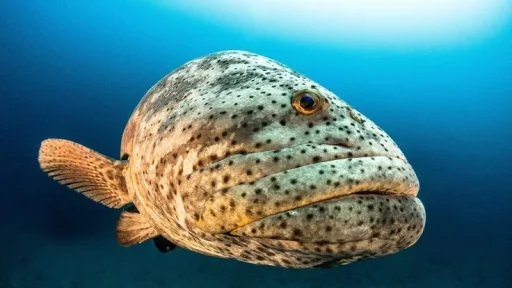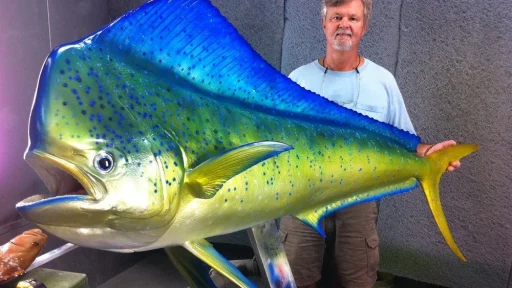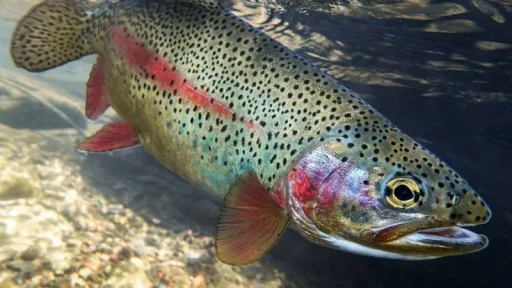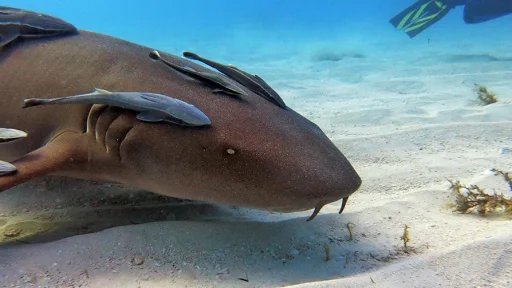Have you ever heard of a fish that can lock itself in place like a living padlock? Welcome to the fascinating world of triggerfish! These remarkable creatures are not just another pretty face in the vast ocean; they’re engineering marvels with a unique defense mechanism that’s given them their intriguing name. In this deep dive, we’ll explore the ins and outs of triggerfish, from their distinctive features to their crucial role in marine ecosystems.
The Triggerfish Family: A Diverse Underwater Clan
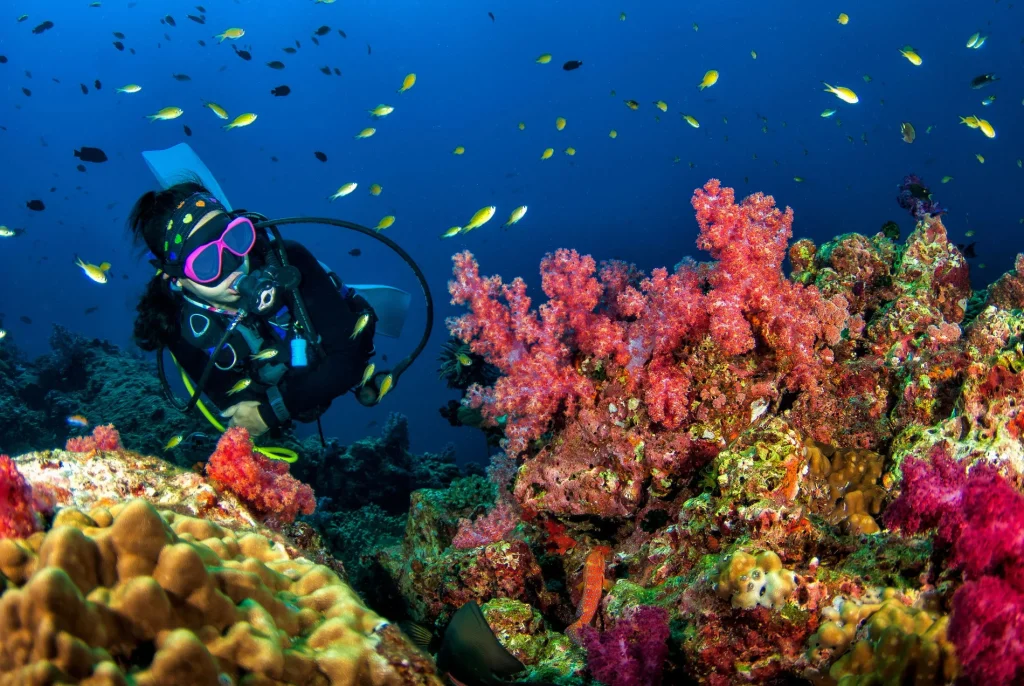
Scientific Classification and Diversity
Triggerfish belong to the family Balistidae, a group of fish that’s as colorful in variety as they are in appearance. With over 40 species swimming in our oceans, these fish have made quite a splash in the scientific community. Each species brings its own flair to the underwater world, but they all share that special “trigger” that makes them stand out.
Where in the World? Triggerfish Distribution
From the warm, crystal-clear waters of tropical coral reefs to the slightly cooler subtropical seas, triggerfish have carved out their niche. They’re like the globetrotters of the fish world, found in the Atlantic, Indian, and Pacific Oceans. But don’t expect to bump into them during a polar plunge – these fish prefer their water on the warmer side!
Physical Characteristics: Nature’s Living Artwork
Body Shape and Size: Compact Powerhouses
Imagine a fish that looks like it’s been slightly squashed from the sides – that’s your typical triggerfish! They’re laterally compressed, which is a fancy way of saying they’re flat-ish from side to side. Size-wise, they’re quite the range, from petite 20 cm swimmers to impressive 75 cm giants, depending on the species.
Coloration and Patterns: A Rainbow Underwater
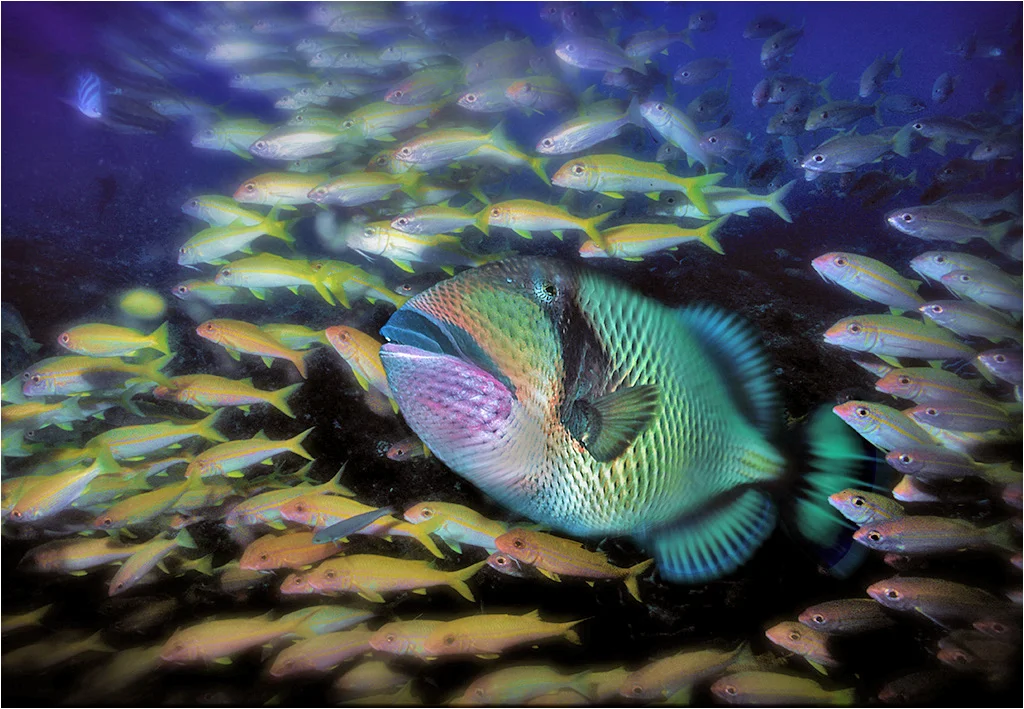
If fish could enter fashion shows, triggerfish would be the trendsetters. Their colors and patterns are nothing short of spectacular. From the Picasso triggerfish with its abstract art-like markings to the jewel-toned brilliance of the Queen triggerfish, these fish are living proof that nature is the ultimate artist.
Unique Features: More Than Meets the Eye
But wait, there’s more! Triggerfish aren’t just about good looks. They’ve got some nifty features that set them apart. Their eyes can move independently, giving them a 360-degree view of their surroundings. Talk about eyes in the back of your head!
The Trigger Mechanism: Nature’s Ingenious Lock
What’s in a Name? The Famous “Trigger”
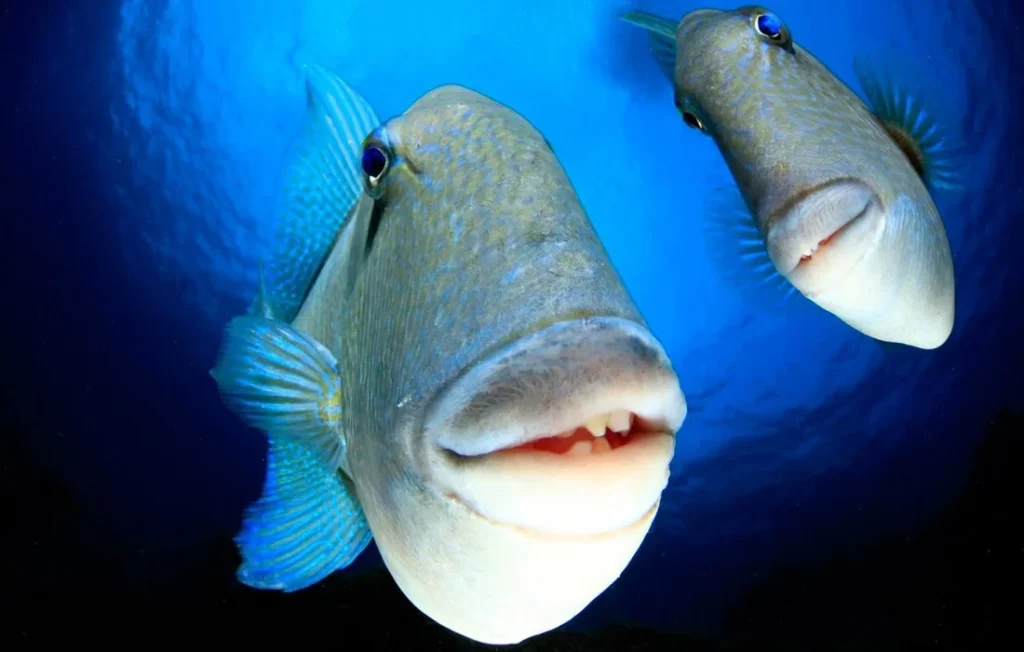
Now, let’s get to the star of the show – the trigger that gives these fish their name. It’s not a hair-trigger temper (though some species can be a bit feisty). Instead, it’s a clever bit of fish engineering that’s all about survival.
How It Works: The Lockdown Lowdown
Picture this: the triggerfish has a large, stout spine on its back. When threatened, it can raise this spine and lock it in place with a smaller spine behind it. It’s like a biological deadbolt! To release it, the fish has to depress the smaller spine – the “trigger” – hence the name.
Purpose and Advantages: Safety First!
This locking mechanism is the triggerfish’s secret weapon. When danger lurks, they can wedge themselves into a coral crevice and engage their “trigger lock.” Predators are left frustrated, unable to pull the triggerfish out. It’s a brilliant defense that’s helped these fish thrive in the competitive world of the reef.
Behavior and Habitat: Life on the Reef
Home Sweet Home: Preferred Environments
Triggerfish are the homeowners of the reef world. They love areas with plenty of coral, where they can find both food and shelter. Some species even carve out territories that they defend with surprising ferocity – especially during breeding season.
Feeding Habits: The Crush and Munch Bunch
With their strong jaws and teeth, triggerfish are the garbage disposals of the reef. They crunch through hard-shelled prey like sea urchins, mollusks, and crustaceans with ease. Some species even take on venomous creatures that other fish wouldn’t dare touch!
Social Structure: The Reef’s Neighborhood Watch
While not exactly social butterflies, triggerfish do have interesting social dynamics. Many species form harems, with a dominant male watching over a group of females. It’s like an underwater reality show, complete with drama and territorial disputes!
Reproduction and Life Cycle: Underwater Family Planning
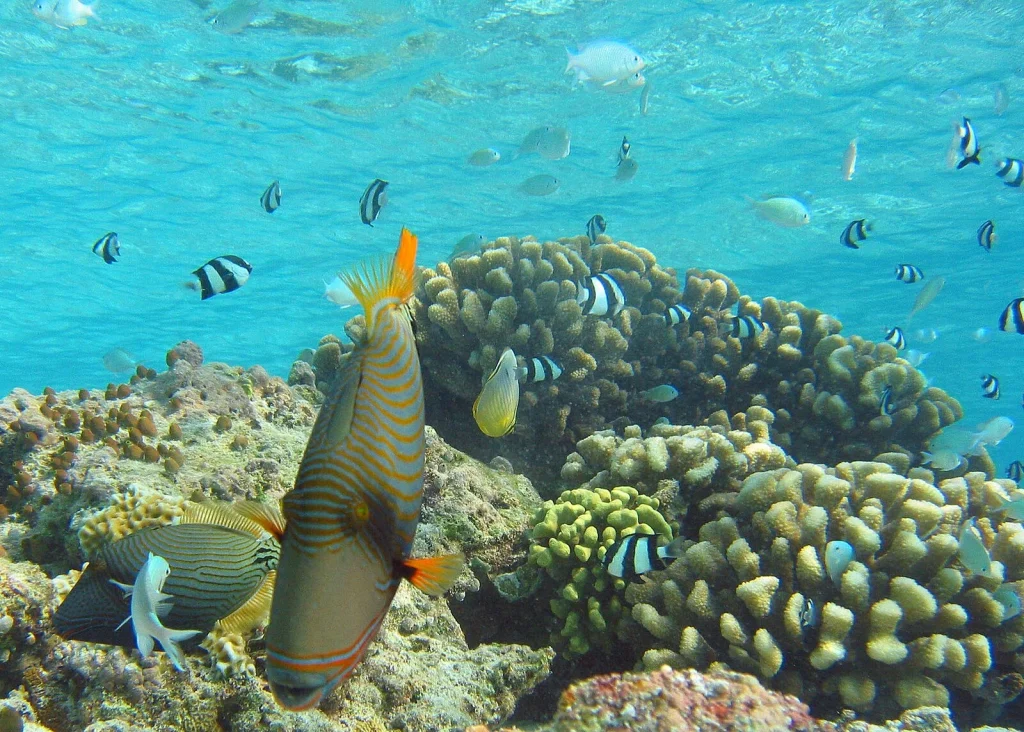
Mating Rituals: The Fish Version of a Dating App
When it comes to love, triggerfish don’t mess around. Males often prepare nesting sites to attract females. It’s like underwater real estate – the better the location, the more likely they are to find a mate.
Nesting Behavior: DIY Fish Cribs
Once a pair has formed, they get busy creating a nest. This usually involves clearing an area of the seafloor and creating a shallow depression. It’s a team effort, with both parents pitching in to prepare for their future offspring.
Parental Care: Helicopter Parents of the Sea
Triggerfish take parenting seriously. After the female lays her eggs, both parents stick around to guard the nest. They’ll chase away anything that gets too close, from small fish to divers! Talk about helicopter parenting – these fish take it to a whole new level.
Ecological Role: Keeping the Reef in Check

Coral Reef Custodians
In the delicate balance of coral reef ecosystems, triggerfish play a crucial role. They’re like the reef’s maintenance crew, keeping populations of sea urchins and other invertebrates in check. Without triggerfish, these ecosystems could quickly become unbalanced.
Interactions with Other Species: It’s Complicated
Triggerfish have a complex web of relationships with other reef dwellers. While they may be predators to some, they’re also prey for larger fish and sharks. It’s a reminder of the intricate dance of life that occurs beneath the waves.
Threats and Conservation: Troubled Waters Ahead
Human Impact: The Usual Suspects
Like many marine species, triggerfish face threats from human activities. Overfishing, habitat destruction, and pollution all take their toll. Some species are popular in the aquarium trade, which can put additional pressure on wild populations.
Climate Change: A Warming World
Climate change is another looming threat. As ocean temperatures rise and coral reefs suffer, triggerfish may find their homes and food sources disappearing. It’s a stark reminder of how our actions on land can have far-reaching consequences under the sea.
Conservation Efforts: Turning the Tide
The good news is that efforts are underway to protect triggerfish and their habitats. Marine protected areas, sustainable fishing practices, and coral reef restoration projects all play a part in ensuring these fascinating fish have a future.
Triggerfish in Human Culture: More Than Just a Pretty Face
On the Plate and in the Tank
In some parts of the world, triggerfish are valued as food fish. Their firm, tasty flesh makes them popular in certain cuisines. They’re also stars in the aquarium world, with their vibrant colors and interesting behaviors making them favorites among marine hobbyists.
A Fish of Many Talents
Beyond their practical uses, triggerfish have captured human imagination. They appear in art, feature in marine biology documentaries, and even inspire underwater photographers to brave their sometimes territorial nature for the perfect shot.
Notable Triggerfish Species: The A-Listers of the Reef
Clown Triggerfish: The Reef’s Jester
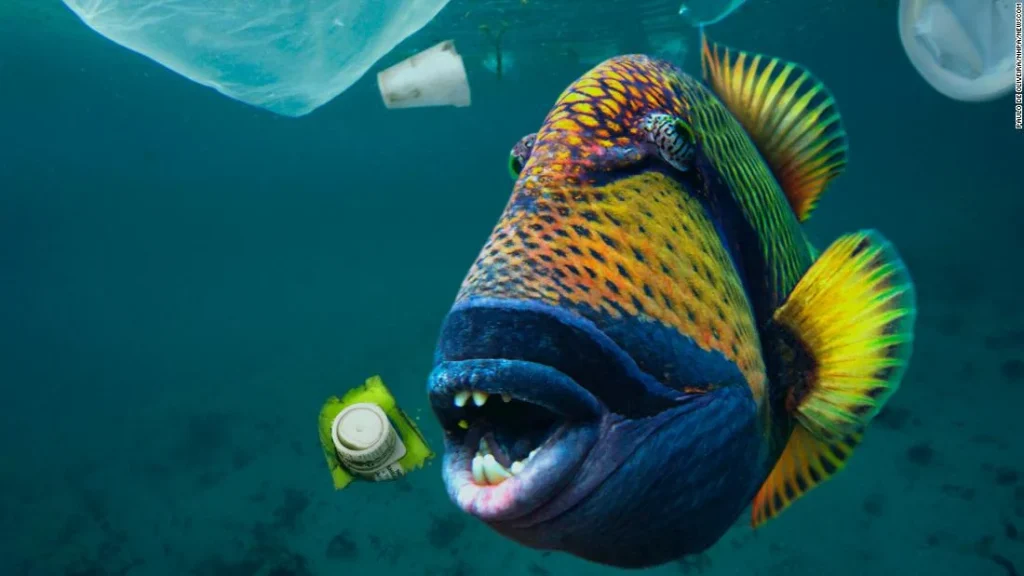
With its polka-dot body and bright yellow mouth, the clown triggerfish looks like it’s ready for a costume party. It’s one of the most striking species and a favorite among divers and aquarium enthusiasts alike.
Picasso Triggerfish: Living Art
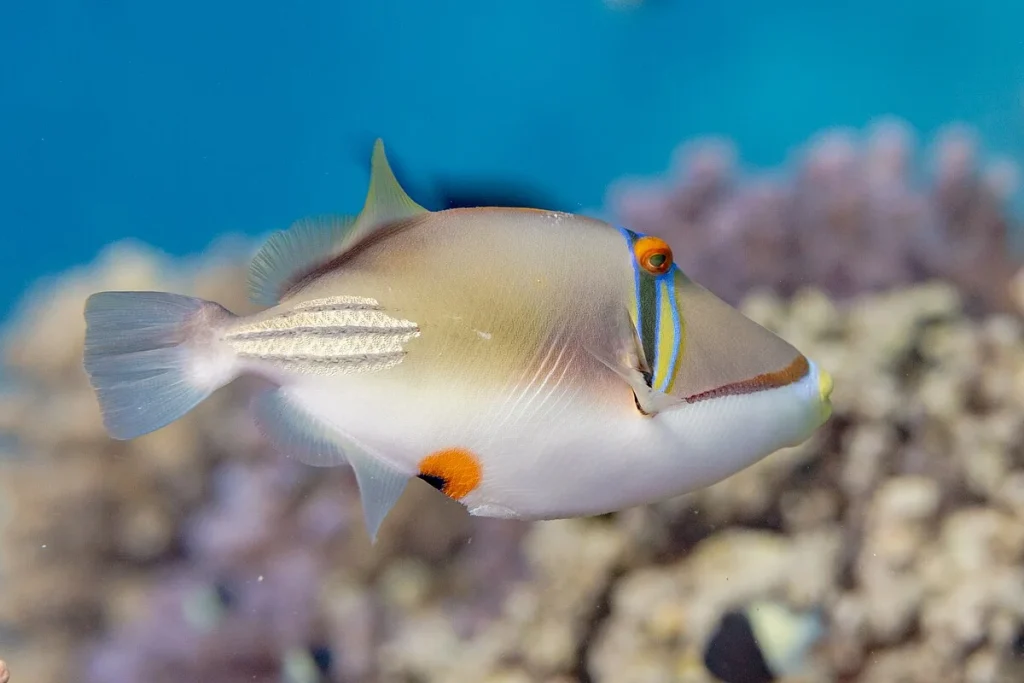
Named after the famous artist, the Picasso triggerfish boasts an intricate pattern of lines and shapes that truly looks like a masterpiece. It’s a common sight in the Indo-Pacific and never fails to catch the eye.
Titan Triggerfish: The Reef’s Bouncer
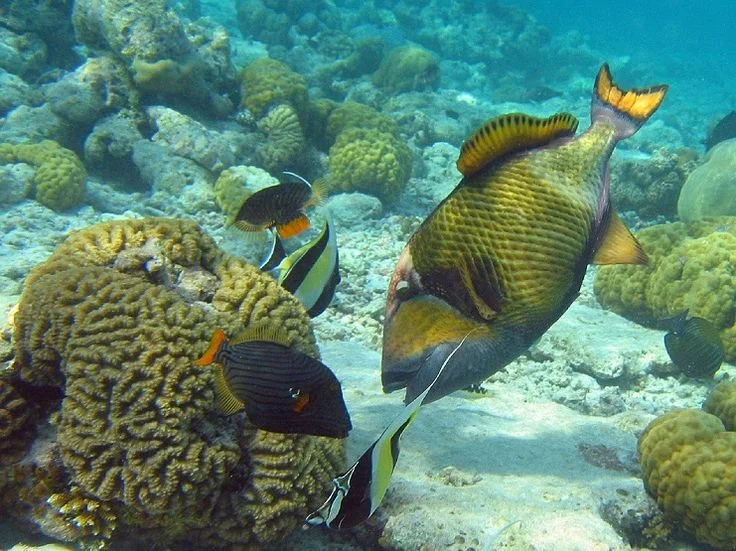
The largest of the triggerfish species, the titan triggerfish can grow up to 75 cm long. It’s known for its aggressive territorial behavior, especially during nesting season. Divers are often warned to keep their distance from these underwater heavyweights.
The Name “Triggerfish”: A Linguistic Deep Dive
Origin Story: A Name with a Mechanism
The name “triggerfish” is a perfect example of form following function. It’s derived directly from the fish’s unique locking spine mechanism – a trigger-like apparatus that’s both ingenious and effective.
Historical Context: From Observation to Nomenclature
Early naturalists and explorers were fascinated by this fish’s ability to “trigger” its defensive spine. As they studied and documented marine life, the name stuck, becoming the common term for this diverse family of fish.
Cultural Significance: More Than Just a Name
In some cultures, the triggerfish holds a special place. For instance, in Hawaii, the humuhumunukunukuapua’a (try saying that five times fast!), a type of triggerfish, is the state fish. It’s a name that’s as much fun to say as the fish is to watch!
Triggerfish Adaptations: Nature’s Problem Solvers
Defensive Mechanisms: More Than Just a Spine
While the trigger mechanism is their claim to fame, triggerfish have other tricks up their fins. Some species can make grunting sounds to ward off predators or competitors. It’s like they have their own underwater alarm system!
Specialized Teeth and Jaws: Nature’s Nutcrackers
Triggerfish jaws are a testament to evolutionary engineering. They’re equipped with strong, chisel-like teeth that can crunch through the toughest shells. It’s like they’re carrying around a Swiss Army knife in their mouths!
Swimming Techniques: The Fin Propeller
Unlike many fish that use their tail fin as the main source of propulsion, triggerfish primarily use their dorsal and anal fins to swim. It gives them incredible maneuverability, allowing them to hover and change direction quickly – perfect for navigating the complex structure of a coral reef.
Research and Studies: Unraveling Triggerfish Mysteries
Recent Discoveries: Always Learning
Scientists are continually uncovering new facts about triggerfish. Recent studies have shed light on their complex social behaviors, including how they communicate and establish territories.
Ongoing Research: The Quest for Knowledge
Current research projects are looking into everything from triggerfish cognition to their role in reef ecosystem dynamics. There’s always something new to learn about these fascinating creatures!
Future Areas of Study: What’s Next?
As technology advances, so does our ability to study marine life. Future research might delve deeper into triggerfish genetics, their adaptation to changing ocean conditions, and their potential as indicator species for reef health.
Triggerfish and Ecosystem Balance: Nature’s Checks and Balances
Controlling Sea Urchin Populations: The Reef’s Lawn Mowers
One of the most important roles triggerfish play is in controlling sea urchin populations. Sea urchins, if left unchecked, can overgraze on coral, creating barren areas known as urchin barrens. Triggerfish help keep this balance in check, protecting the reef’s biodiversity.
Impact on Coral Reef Health: The Ripple Effect
By maintaining this balance, triggerfish indirectly contribute to coral reef health. Their presence helps ensure a diverse ecosystem where corals can thrive, fish can find shelter, and the intricate web of reef life can continue.
Indicator Species: Canaries in the Coral Mine
The health and abundance of triggerfish populations can tell us a lot about the overall health of a reef ecosystem. Scientists often use them as indicator species, providing valuable insights into the impacts of environmental changes and human activities on our oceans.
Conclusion: The Lasting Legacy of Living Locks
As we’ve explored the world of triggerfish, from their unique trigger mechanism to their crucial role in reef ecosystems, it’s clear that these fish are far more than just a pretty face in the vast ocean. They’re engineers, artists, and guardians of the reef all rolled into one.
The triggerfish’s story is one of adaptation, resilience, and importance. As our oceans face unprecedented challenges from climate change and human activities, understanding and protecting species like the triggerfish becomes more crucial than ever.
Looking to the future, the conservation of triggerfish and their habitats is not just about preserving a fascinating species. It’s about maintaining the delicate balance of our ocean ecosystems, ensuring the health of our planet’s blue heart for generations to come.
So the next time you’re lucky enough to spot a triggerfish, whether in the wild or in an aquarium, take a moment to appreciate these living locks of the sea. They’re not just fish – they’re a testament to the ingenuity of nature and a crucial piece in the puzzle of marine life.
FAQs: Diving Deeper into Triggerfish Trivia
Q: Can triggerfish be dangerous to humans? A: While generally not aggressive towards humans, some larger species like the titan triggerfish can become territorial, especially during nesting season. They may charge at divers who get too close to their nests, potentially causing injury with their strong teeth.
Q: How long do triggerfish typically live? A: The lifespan of triggerfish varies by species, but many can live for 10-20 years in the wild. In captivity, with proper care, some species have been known to live even longer.
Q: Are triggerfish good for aquariums? A: Some smaller triggerfish species can make interesting aquarium inhabitants, but they require large tanks, specific diets, and experienced care. They can be aggressive towards other fish, so careful planning is necessary when adding them to a community tank.
Q: How do triggerfish sleep? A: Triggerfish have a unique sleeping behavior. At night, they often wedge themselves into crevices in the reef and lock their trigger mechanism, providing protection while they rest.
Q: Can triggerfish change colors? A: While not as dramatically as some other fish species, some triggerfish can adjust their coloration to blend with their surroundings or communicate with other fish. This ability is particularly noticeable during mating rituals or territorial displays.


